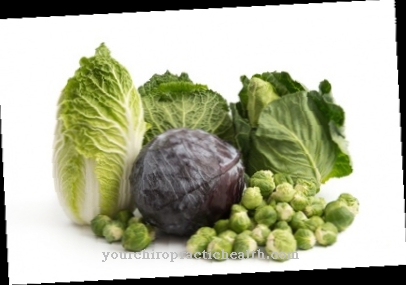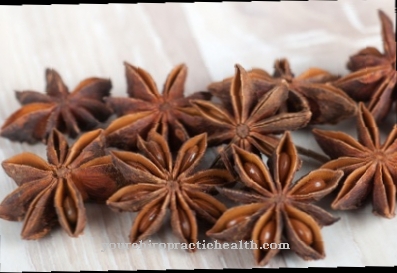Parsley is a type of Petroselinum from the umbelliferae family. Although parsley is a classic seasoning for cooking, it also contains many ingredients that can be used as a medicinal herb.
Occurrence & cultivation of parsley

Originally comes parsley from the Mediterranean region of southern Italy, Algeria and Tunisia. It is now grown and cultivated all over Europe as herbs, spices and vegetables.
The normal garden parsley is a light green, hairless, biennial plant in temperate zones and annually in subtropics or tropics. In the first year, a rosette of leaves of 10-25cm forms with numerous smaller leaves and a taproot from which the plant tears in winter.
In the second year the plant grows up to 75cm high and forms many small 3 - 10cm umbels with approx. 2mm small green-yellow flowers. Usually the plant dies after the seeds mature.
Application & use
parsley is very common in traditional cuisine of the Middle East, Central Europe, and North America. The herbs with the curved leaves are popular as a garnish for dishes. In Central and Eastern Europe, as well as in West Asia, many dishes are served with a small bunch of parsley on top of the dish.
Parsley is also often served with potatoes, with rice dishes (risotto), on fish, roasted chicken, lamb, goose, steak, other meat or stews (goulash, bell pepper chicken). In southern and central Europe, parsley is a soup vegetable, a selection of herbs and vegetables sold in bundles as a base for vegetable broths or sauces. Because of its popularity, parsley can be found almost everywhere, whether fresh or dried.
It's also easy to grow the spice yourself in the garden. Fresh parsley is usually added to the food that has already been prepared, as a visual or flavor rounding off. Dried parsley is mainly used for cooking. Freed from the liquid, 1.2 kg of fresh parsley are required to make 100 grams of dried spice. The advantages of dried parsley are also in the storage.
In a locked container, the spice can keep its taste for over a year. Fresh parsley will last a maximum of two weeks when stored in a plastic bag in the refrigerator with a little water. Freezing fresh parsley is also a proven method of storage. Simply put the whole bundle in a freezer bag or a plastic box, or fill the chopped spice with a little water in ice cube trays. In both variants, the parsley will keep for about 6 months.
Significance for health, treatment & prevention
Aside from taste and decoration can be a bunch parsley also do a lot for your health. Parsley contains two types of special substances that provide unique health benefits.
First of all, the oil components should be mentioned. These include: myristicin, limonene, eugenol and alpha thuja. Second, the flavonoids, including apiin, apigenin, crisoeriol and luteolin. The oils in parsley, especially myristicin, have been shown in animal studies to prevent the growth of tumors, especially those in the lungs. Myristicin has also proven to be beneficial in activating certain enzymes to protect against harmful molecular compounds.
The characteristics of the oils of parsley qualify the spice as a food with strong poison-binding properties. The flavonoids in parsley - especially luteolin - have a function as antioxidants. The absorption of antioxidants prevents cell damage caused by oxidation, which is also responsible for the rapid aging process.
In addition, parsley is very rich in vitamin C and vitamin A. Vitamin C has a variety of functions in the body. One of the most important is the binding of free radicals, which can also be responsible for the development of serious diseases. These include cancer, diabetes and asthma. People with a high consumption of vitamin C strengthen their immune system and protect themselves against diseases.
In addition, parsley is rich in folic acid, one of the most important B vitamins. While it has many essential functions in the body, its most crucial link is with heart health. It binds homocysteine. In large quantities, this molecule can damage blood vessels and lead to heart disease and heart attacks. Foods high in folic acid, such as parsley, can help prevent these symptoms.
























.jpg)



